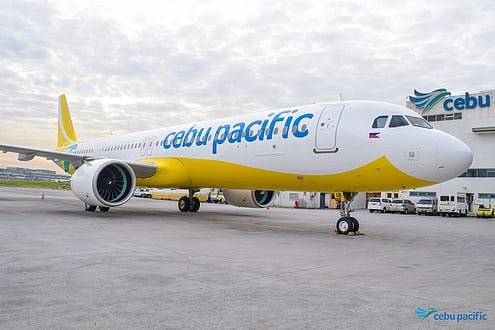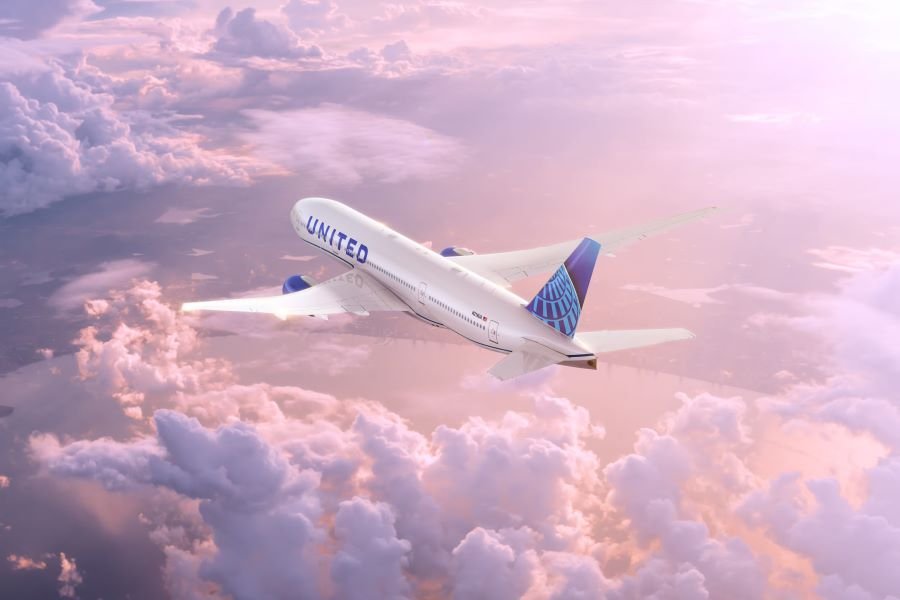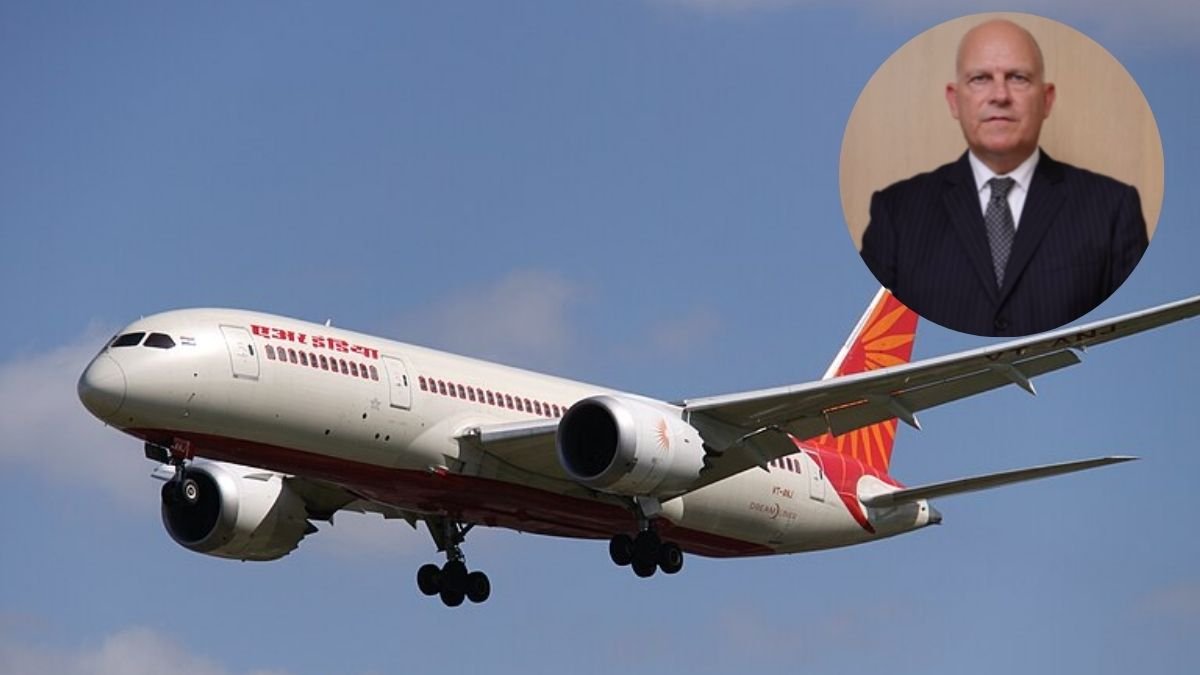Flight Buzz
Dubai-Manila flights: Book tickets for Dh8 only in Cebu Pacific’s August sale

Travellers booking flights from Dubai to Manila can now get a ticket for as low as Dh8 (base fare), as part of a special offer from Cebu Pacific (CEB).
The Philippines’ leading carrier has launched its August seat sale. From August 7-10, guests from Dubai may book flights to Manila for as low as AED 8 one-way base fare, exclusive of fees and surcharges. The travel period runs from February 1 to June 30, 2026.
With the airline’s widest domestic reach, travellers can plan their trips to the Philippine capital or connect to the airline’s other key regional hubs such as Clark, Cebu, Iloilo and Davao, for faster inter-island access within the country.
Stay up to date with the latest news. Follow KT on WhatsApp Channels.
From Manila, CEB flies to 27 Philippine destinations, including Dumaguete and Iloilo. From Dumaguete, visitors can unwind in natural spring pools or take a short boat ride to Apo Island for diving or snorkeling. From Iloilo, travellers can explore Gigantes Islands or visit Guimaras in May for the Mango Festival.
Just a two-hour drive from Manila, Clark offers activities such as archery or a trek to Mount Pinatubo. CEB’s Clark hub can also serve as a jump-off point to Puerto Princesa, which features the renowned Underground River and offers island-hopping tours for an immersive experience.
CEB operates in 37 Philippine domestic and 26 international destinations spread across Asia, Australia, and the Middle East.
Flight Buzz
ANA’s New Wi-Fi Upgrade Makes Boring Flights a Thing of the Past

Published on
August 7, 2025 |
By: TTW News Desk
The introduction of free in-flight Wi-Fi by ANA is transforming long-haul international flights into an exciting and accessible experience. ANA is ramping up convenience by offering fast, reliable internet access on long-haul flights. This upgrade will allow passengers to freely stream movies, attend virtual meetings, browse, and chat, all without cost. This new service is to be phased in, commencing with select mid-range aircraft and increasing to more than 80% of the international fleet by 2030. ANA’s commitment to travel convenience places them in the world’s digitally advanced airlines. At 35,000 feet, international travel is set to receive a radical upgrade with the new Wi-Fi system equipped to deliver broadband access in the sky.
Mid-Range Aircraft First in Line for Upgrade
The first wave of installations is targeting the carrier’s medium-haul widebody jets, specifically those used on regional international routes across Asia. These aircraft are currently being equipped with advanced satellite internet systems that allow for stable, high-speed connectivity during flight.
By late 2025, three of these mid-range jets will be fully upgraded with the new Wi-Fi system. Another trio of aircraft is scheduled to follow in 2026. These planes are typically deployed on flights between Japan and key cities in Asia and Oceania, making them ideal for the initial phase of implementation.
The service is designed to support a full range of online activity, including streaming video, video calls, social media, and cloud-based work tools. This marks a significant leap from past in-flight systems, many of which offered limited access or required extra fees.
Expansion Set for Long-Haul and New Deliveries
Looking ahead, the airline is preparing to install the same high-performance connectivity across its long-haul fleet. Starting in 2026, newer widebody aircraft used on intercontinental flights—such as those connecting Japan with Europe, North America, and Australia—will begin receiving the same system upgrades.
The plan also includes equipping all new aircraft delivered for international service with the upgraded technology from the outset. This ensures that as the fleet continues to grow and modernize, the in-flight experience remains consistent regardless of the aircraft model or route.
By prioritizing both retrofitting of existing planes and integration into future deliveries, the airline is laying the foundation for a fully connected fleet that caters to the expectations of modern global travelers.
Free Access Aims to Redefine Passenger Expectations
In an age where digital access is considered essential, the move to eliminate charges for in-flight Wi-Fi reflects a major shift in airline service philosophy. Instead of treating internet access as a premium offering, the airline is aligning itself with a growing trend toward complimentary digital amenities.
The upgraded system has been designed to match land-based internet standards, allowing travelers to enjoy uninterrupted connectivity while flying at high altitudes. The goal is to make air travel feel less isolating and more integrated with the digital world—whether passengers want to stream a film, join a video conference, or simply stay in touch with loved ones.
Removing the cost barrier is expected to increase usage across all passenger types, from business travelers to families on holiday. It also places the airline ahead of many global competitors who still rely on pay-per-use or limited-time access models.
Positioning for a Competitive Future in Air Travel
With international travel picking up again, airlines are finding it more and more necessary to rethink how they provide value to customers. While comfort and meals served during the flight are still important, features such as quick and unrestricted Wi-Fi are becoming a deciding factor for longer flight bookings.
This move seeks to resolve issues around customer satisfaction and reposition the airline in the greater context of the very competitive international market. Through making sure that high-speed Wi-Fi is universally accessible, the airline is trying to position itself as a pioneer in the digital services’ provision as a competitive edge in the aviation sector.
The aircraft overhauls also demonstrate the commitment to long-term strategies which are essential in a fast-changing environment where infrastructure frameworks have to adapt to the needs of the customers.
The airline aims to be one of the leading carriers in the international fleet digital connectivity by 2030. With more than 80% of its aircraft expected to be equipped with the free high-speed system, passengers will enjoy a gate-to-gate seamless travel experience during the journey—no login fees and no time constraints.
Flight Buzz
United Airlines Cancels Over 110 Flights Nationwide, Stranding Passengers at Newark, San Francisco, Denver, and Houston Airports: New Updates You Need To Know

Published on
August 7, 2025 |
Author: Paramita Sarkar
On Wednesday evening, August 6, 2025, United Airlines experienced a significant technology outage that led to the cancellation of over 110 flights across its network. The disruption, which began around 6:15 p.m. ET, affected major hubs including Newark Liberty International Airport (EWR), San Francisco International Airport (SFO), Denver International Airport (DEN), and George Bush Intercontinental Airport (IAH). The issue stemmed from a failure in the airline’s Unimatic system, which handles critical flight data such as weight and balance calculations and flight tracking.
The Federal Aviation Administration (FAA) also intervened, issuing ground stops at several major airports. This contributed to widespread delays and cancellations not only at United Airlines hubs but also at other airports around the United States. Passengers faced massive disruptions as United Airlines struggled to restore its systems, affecting both domestic and international flights. The airline, in response, was forced to offer compensation and rebooking options, but the chaos continued well into the night.
Flight Cancellations and Affected Routes
According to FlightAware, United Airlines had canceled 23 flights by 6:25 p.m. ET, with the number increasing as the evening progressed. The cancellations impacted both domestic and international routes, with notable disruptions on flights departing from and arriving at major U.S. airports.
Key Affected Routes:
- Newark (EWR): Several departures and arrivals were canceled or delayed, including flights to destinations such as Chicago (ORD), San Francisco (SFO), and Denver (DEN).
- San Francisco (SFO): Over 150 United flights were delayed, and 11 were canceled, affecting both domestic and international connections.
- Denver (DEN): Multiple flights were delayed, with passengers experiencing extended wait times both on the tarmac and at gates.
- Houston (IAH): Delays and cancellations were reported, impacting flights to various destinations across the U.S.
FlightAware’s MiseryMap highlighted these airports as the most affected, with numerous delays and cancellations throughout the evening.
Passenger Impact and Airline Response
Passengers reported significant disruptions, including extended wait times on the tarmac and at gates. Some travelers experienced delays of up to three hours before being allowed to disembark. United Airlines responded by offering hotel accommodations and $200 compensation to affected passengers. Additionally, the airline provided waivers for rescheduling flights booked before August 5 for travel between August 7 and 10, allowing passengers to rebook without incurring extra costs.
The FAA issued ground stops at several major airports, including Newark, Chicago, and San Francisco, contributing to widespread delays across the U.S. airspace.
Technical Details and Resolution
The outage was traced to a failure in United’s Unimatic system, which is essential for calculating aircraft weight and balance and tracking flight data. United Airlines confirmed that the issue was not a cyberattack and did not affect United Express regional flights or aircraft already in the air. The system was restored after a few hours, but residual delays persisted into the night.
The incident follows a similar disruption at Alaska Airlines earlier this year, raising concerns about the reliability of airline technology systems during peak travel times.
Chaos at major airports
The technology outage that grounded over 110 United Airlines flights created chaos at major airports, including Newark, San Francisco, Denver, and Houston. While the system issues have since been resolved, the airline continues to work through the backlog of delays and cancellations. United Airlines offered compensation to passengers and is taking steps to prevent further disruptions.
Travelers affected by the outage are advised to check the United Airlines website and FlightAware for the latest information on flight statuses and rebooking options.
The incident highlights the vulnerability of airline operations to technological failures, and it remains to be seen whether United will implement further safeguards to prevent such disruptions in the future.
Image: United Airlines
Flight Buzz
Air India To Fully Resume International Flights From Oct 1; CEO Assures Complete Safety Measures

Air India is all set to fully resume its international flights from October 1. CEO Campbell Wilson announced on Wednesday that the airline started restoring its international services in phases from August 1. Now, they’re targeting full resumption. He also assured the complete safety of passengers.
Air India To Fully Resume Its International Flights
Air India had earlier announced a 15% cut in its international flights operating on wide-body aircraft on June 18. The decision was taken after the deadly AI171 crash in Ahmedabad. However, the airline began a phased restoration of services in August. As per a report by Hindustan Times, the airline’s CEO, Campbell Wilson, announced on Wednesday that they now plan to fully restore international flight operations from October 1.
The statement also acknowledged that after the tragic crash, there has been “heightened scrutiny, coverage, and concern about air travel,” adding that the airline has now undertaken complete safety measures for the well-being of its passengers.
Also Read: Air India Delhi-Milan Flight Cancelled; Boeing 787 Dreamliner Faces Technical Snag Before Take-Off
CEO Addresses Challenges
Acknowledging the recent disruptions, the CEO added that he recognises there have been some operational challenges over the past few weeks, which have disrupted air travel. He assured that the airline is taking the matter seriously and is working to minimise inconvenience to passengers.
Moreover, this measured approach gives them enough time to complete every verification and resume services fully with “complete confidence.” The decision has been taken to ensure stability in Air India’s operations, to improve efficiency, and to reduce inconvenience to flyers.
As per a report by Mint, Campbell Wilson stated that Air India has conducted detailed inspections of its fleet of Boeing 787-8 and 787-9 aircraft under India’s aviation regulator, the Directorate General of Civil Aviation (DGCA). He confirmed that no issues were found in the aircraft during inspection. He also mentioned that the fuel control switch was inspected, and no problems were detected there either. Additionally, he added that Air India’s safety protocols are “rigorous and multi-layered.” Every aircraft will now undergo thorough checks before take-off by trained engineers and pilots.
Also Read: Your Humour Brings Joy Even In The Clouds,” Air India Crew Surprises Vir Das With A Heartfelt Note
The international flights, which were being operated in phases, will now resume fully from October 1.
Cover Image Courtesy: Air India, Wikipedia/ aeroprints and Air India/ Instagram
For more such snackable content, interesting discoveries and the latest updates on food, travel and experiences in your city, download the Curly Tales App. Download HERE.
First Published: August 07, 2025 11:15 AM
-

 Brand Stories2 weeks ago
Brand Stories2 weeks agoBloom Hotels: A Modern Vision of Hospitality Redefining Travel
-

 Brand Stories2 weeks ago
Brand Stories2 weeks agoCheQin.ai sets a new standard for hotel booking with its AI capabilities: empowering travellers to bargain, choose the best, and book with clarity.
-

 Destinations & Things To Do3 weeks ago
Destinations & Things To Do3 weeks agoUntouched Destinations: Stunning Hidden Gems You Must Visit
-

 Destinations & Things To Do2 weeks ago
Destinations & Things To Do2 weeks agoThis Hidden Beach in India Glows at Night-But Only in One Secret Season
-

 AI in Travel3 weeks ago
AI in Travel3 weeks agoAI Travel Revolution: Must-Have Guide to the Best Experience
-

 Brand Stories1 month ago
Brand Stories1 month agoVoice AI Startup ElevenLabs Plans to Add Hubs Around the World
-

 Brand Stories4 weeks ago
Brand Stories4 weeks agoHow Elon Musk’s rogue Grok chatbot became a cautionary AI tale
-

 Brand Stories2 weeks ago
Brand Stories2 weeks agoContactless Hospitality: Why Remote Management Technology Is Key to Seamless Guest Experiences
-

 Asia Travel Pulse1 month ago
Asia Travel Pulse1 month agoLooking For Adventure In Asia? Here Are 7 Epic Destinations You Need To Experience At Least Once – Zee News
-

 AI in Travel1 month ago
AI in Travel1 month ago‘Will AI take my job?’ A trip to a Beijing fortune-telling bar to see what lies ahead | China













You must be logged in to post a comment Login